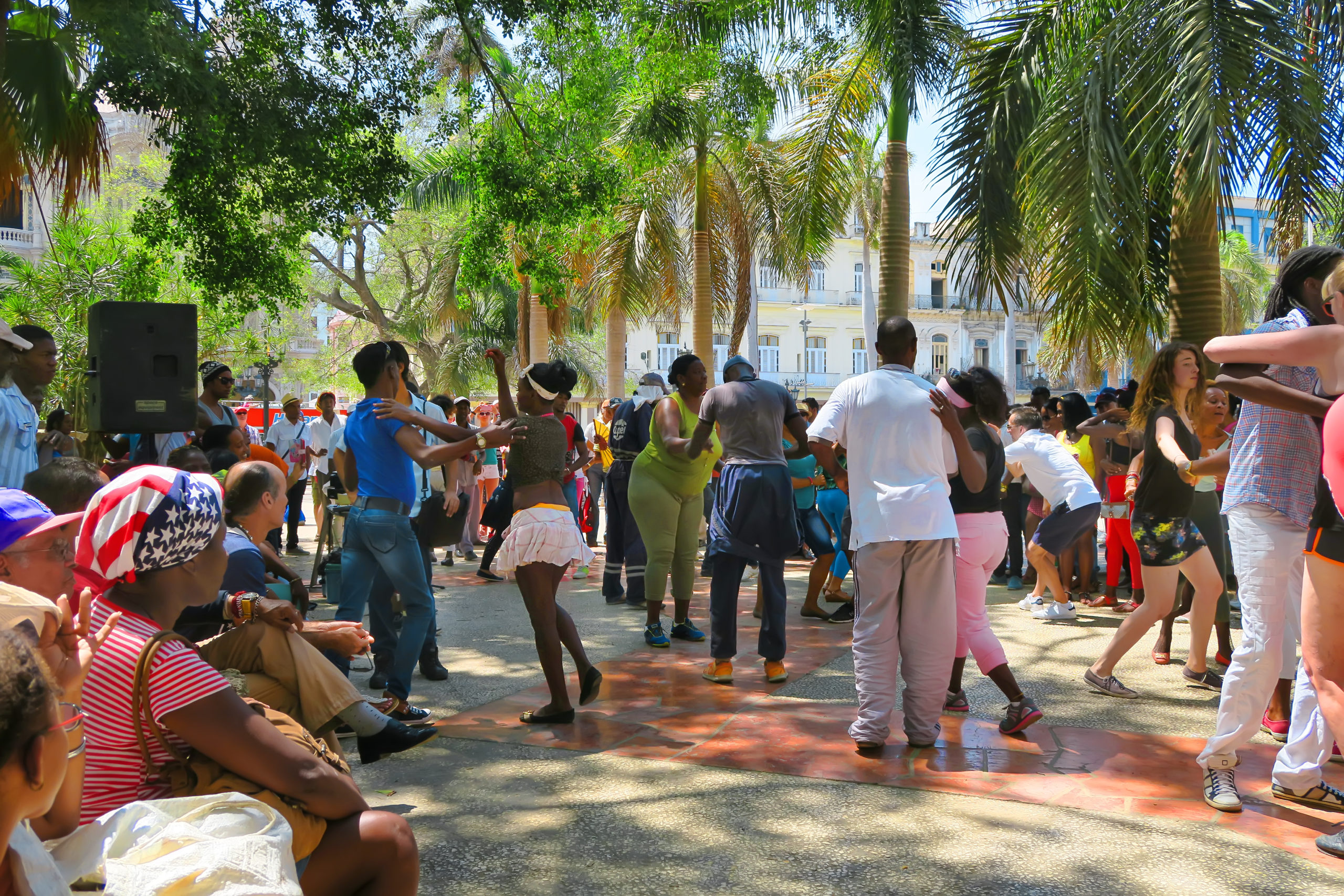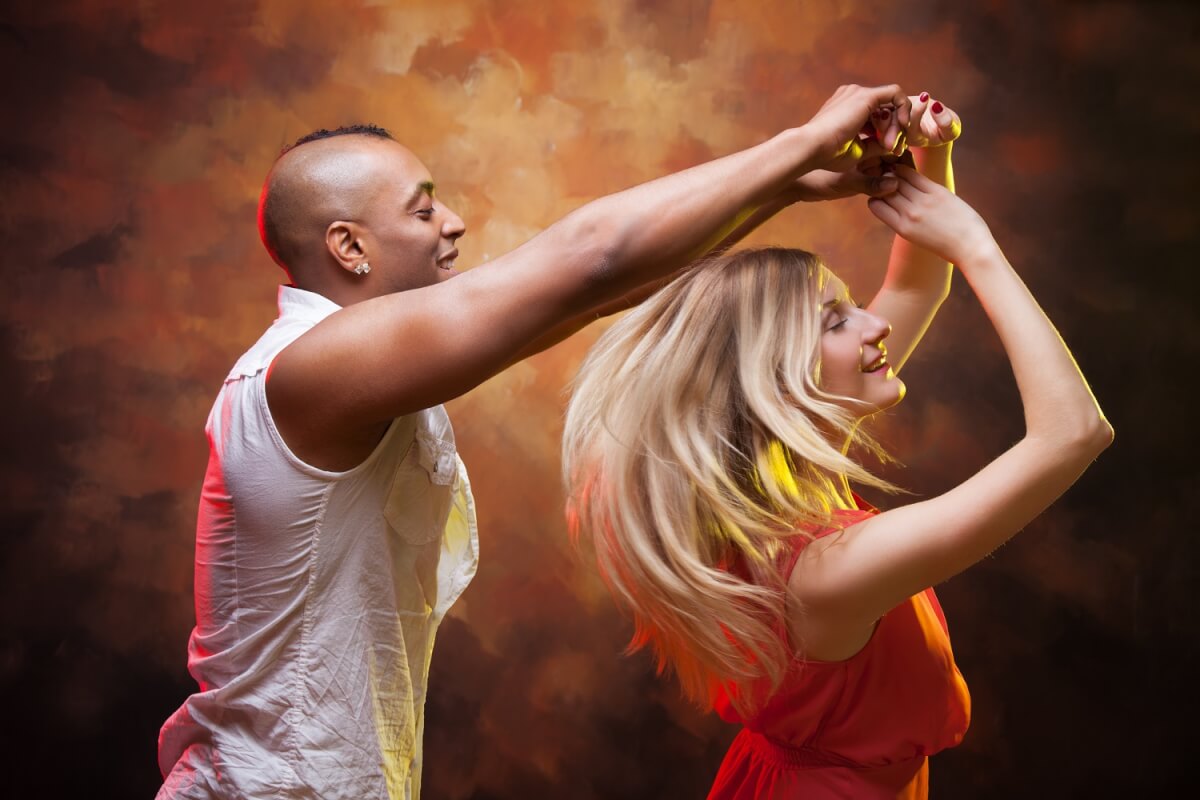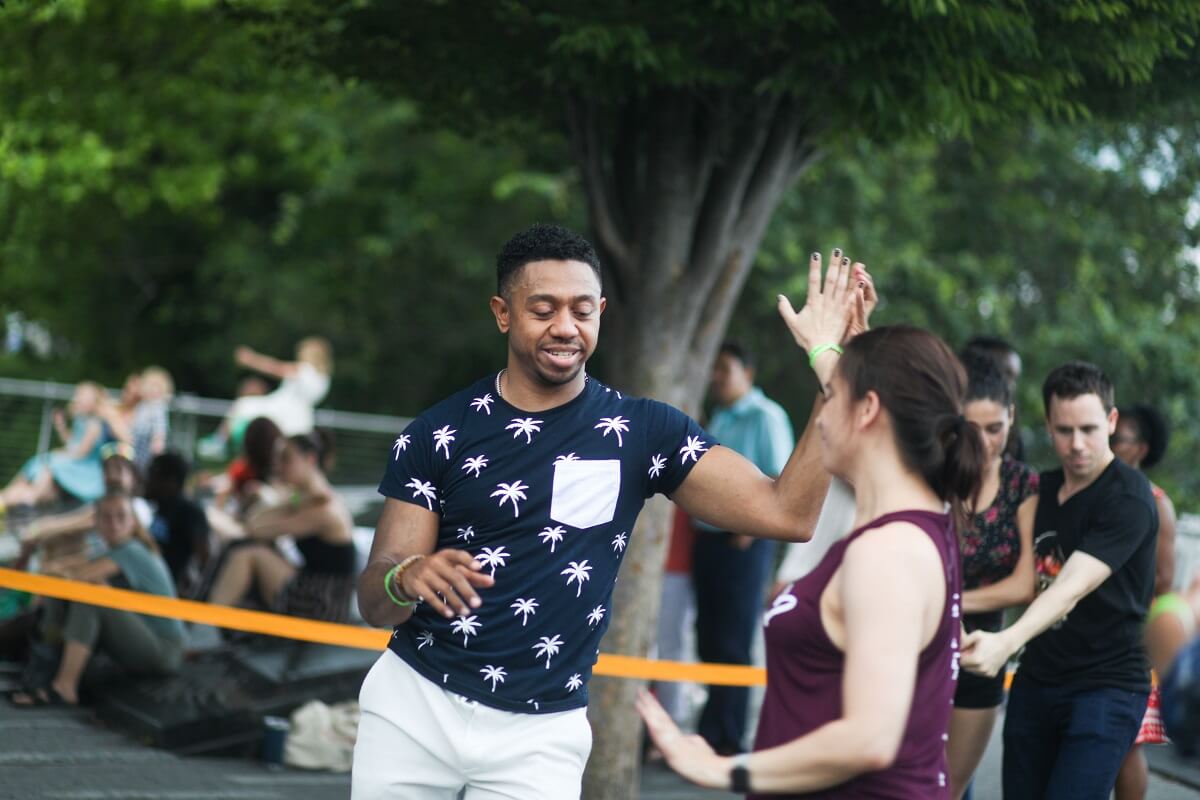Salsa and bachata dancers often tell me “I wish I spoke Spanish” or “I’m learning Spanish now”. They gush over how wonderful it would be to understand the lyrics of all those “romantic” songs they’re dancing to. But should you really learn Spanish just because you love the dances?
I’m not a native Spanish speaker and I have a long way to go in my language studies. I am—and always will be—a guiri, the European Spanish version of gringo.
Being a guiri rather than a gringo means I’m not just learning the language and culture but also that I’m learning the version that isn’t used in many of the songs I’m dancing to. Other than when I’m badly singing along to my playlists, voy pa’lla is no more likely to come out of my mouth than fluent Welsh, and I still need someone to translate phrases like eta que ta’ aqui for me.
Yet learning Spanish has transformed my relationship with Latin dances, for better and for worse. If you’re thinking about going to language classes, here’s what it’s meant for me.
Stage 1: No Hablo Español
The ignorance-is-bliss stage: this had its pros and cons.
Let’s start with the positive: I could ignore the lyrics and focus on what the instruments were doing. I’ve heard it said that there are two types of people in the world, those who listen to a song’s lyrics and those who listen to its beat. I fall on the lyrics side, which can make learning a new dance challenging. If the words resonate with me, I can find it hard to focus on the beat, let alone on being musical.
However, more than once a Spanish speaker smirked at me and asked, “Do you really not understand what the lyrics are?”
Later, I started learning Brazilian zouk in Spain. Teachers would stress the need to dance romantically to songs such as Radiohead’s Creep or one that, for me, channelled abusive relationships. Followers would drag me onto the floor, telling me they loved dancing to songs such as the sexually explicit Side to Side. And I will never forget the betrayed look on one dance friend’s face when they asked me what a song meant and I explained it was about masturbating because you’re newly single and can no longer have regular sex with your ex-partner.
Sometimes, what a song sounds like and what a song is about are vastly different, and I am sure my dance style in certain songs was jarring for partners who understood the lyrics.
Of course, you can Google Translate your favourite songs, but this doesn’t always capture the meaning. Not only do you miss a lot of cultural references, but lyrics aren’t designed to be read like poems.
Take “Me Emborrachare”. A dancer friend of mine told me they thought it was misleading because it sounds cheerful but the lyrics are sad: I’m going to get drunk, it’s all your fault, I’m going to get drunk, it’s all my fault, I’m alone without your love, lost in the alcohol, I cry because you betrayed me, the promises you made me have been carried away by the wind, I’m going to get drunk…
I told him that I didn’t think it was so much a sad song as a drunken song. While I might be wrong, I interpret it as going on a big night out with your friends after a breakup, when everyone sets out to cheer up the newly single person. Every so often, this person will break into drunken monologues about their ex, until someone puts a tequila shot in their hand and drags them to the dance floor. And so, when I dance to the song, this is the energy I feel: that of being at a party with friends (and hopefully not dancing like a drunken mess).
Stage 2: Wait, What Did That Song Just Say?! Aka: It’s Time to Cull My Playlists
No matter how many terrible songs I’ve listened to, I will always remember the first time I realised I was listening to a string of misogyny. Not only did I dislike hearing it, but I felt angry on behalf of every woman who dances along to it, smiling away, not understanding what the song was saying.
I felt angry because I knew I’d done the same thing.
Sometimes, it seems like the songs with the best music have the worst lyrics. I loved Romeo Santos’ “Propuesta Indecente” until I understood the verse that translates to “If I lack respect with you and then blame the alcohol, if I lift up your skirt”. I find myself frustrated that his song “Canalla” is misogynistic in both English and Spanish, yet I’ve heard it so many times that I catch myself singing along to the words without realising. Then there’s La Sonora Matancera’s “Mala Mujer” with its chants of “mátala”, kill her, that I had so many happy memories of dancing to
This was a sad stage for me in my language-learning and one continues to frustrate me. I know it’s not just me who feels this way: one Spanish friend of mine refused to dance to anything other than English-language remixes for his first year of Latin dancing because of the frequent misogyny.
It also leaves me questioning how this relates to the objectification and sexualisation of women on the social dance floor—but that’s a topic for another article.
Stage 3: I Admire How Beautifully People Dance to the Lyrics
I realised you could pair dance moves with lyrics when I stepped in for an absent lead in a dance school’s performance. I hear a lot of negativity about performances and choreographed routines, but one thing I think is great about them is the opportunity to pick up musicality.
The performance started with Prince Royce’s “Asalto”, which includes the line no bajes las manos (don’t lower your hands). At this point, the followers had to do a series of turns with their arms in the air. As each turn ended, they would start to lower their arms until the leader indicated the next turn, at which point they raised their arms again.
When the song went yo no me rendiré (I will not give up), the leaders started the line with their backs to the followers and turned towards them at the end. They were simple tricks, but they won my heart and gave me something to aim for as a lead.
Stage 4: Falling in Love With the Words
The first time I understood the lyrics to “Extraño a mi Pueblo” by Frank Reyes, I stopped dead on a sunny street. In this song, a man speaks to his children who he left behind when he migrated in the hopes of building a better future. The pain of that man and his children resonated so strongly that I then listened to it three times on repeat and then added it to my playlist titled favourites.
A sad bachata song? It’s almost a stereotype—but there are also lyrics that I find uplifting, sexy, funny, cathartic, and empowering. There are songs that bring to mind certain people.
The lyrics we dance to can at times be frustratingly sexist. They can be superficial. But they can also be poetic, moving, and clever.
Stage 5: I Finally Understand What the Teacher Is Saying
There’s a certain amount you can pick up by observation even when you don’t speak the language. Yet speaking Spanish enables me to ask “Which arm do you do that with?” and “How does the leader indicate this move?”
Technique and connection also became easier to learn when I understood what the teacher was saying. And being able to attend a musicality or dance history class and comprehend all of it is incredibly valuable.
Speaking Spanish helps me understand all the jokes and undercurrents. I remember trying to work out what the teacher was saying to provoke so many giggles in one Brazilian zouk class, before deciding to just smile cheerfully and focus on the hip movement we were practising. Later, I realised that her repetition of “meter… sacar… meter… sacar” was instructing us to imagine we were enacting penetrative sex and was left blushing at the memory of my naïve smile.
What’s more, understanding the language allows me to read more dance blogs and discussions on social media, from song breakdowns through to discussions over cultural appropriation. I might not always agree with what I read or be able to appreciate all the complexities of cultural references, but I appreciate being able to learn from them.
Should Latin Dancers Learn Spanish?
“Should” is a strong word: if you want to learn it, then yes, you should go ahead and pick it up. But if you don’t want to? Or you realise it’s too expensive and time-consuming for you to take on? Then don’t. I love understanding Spanish, but I’d still love dancing without it. And I haven’t started learning Portuguese, despite dabbling in kizomba.
For me, I love the richer understanding Spanish brings me. But I haven’t learned it just for dancing—and I wouldn’t have enjoyed learning it had it felt like an obligation.
Tanya is a social dancer and non-stop traveller who loves how dancing allows her to meet people no matter where she goes.










